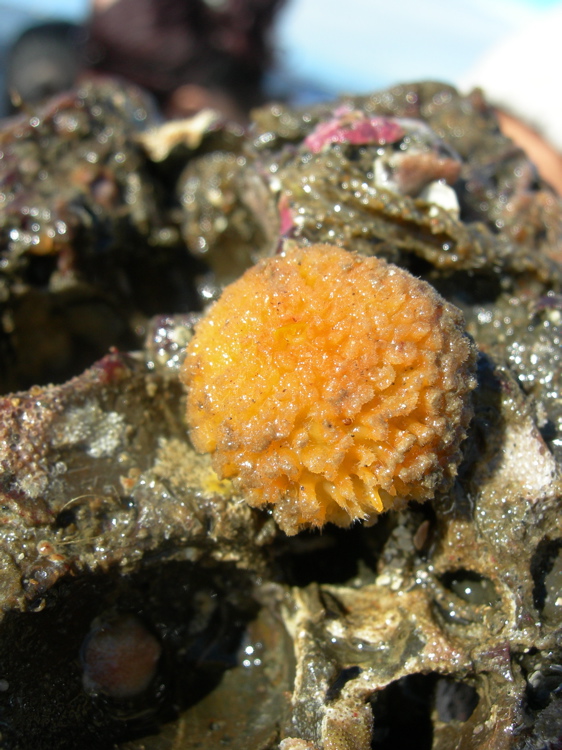
Image from R/V Vantuna Cruise off San Pedro, Los Angeles Co., CA, February 17, 2006
Despite its common name, the orange puffball sponge (Tethya aurantia) varies from orange to yellow or green (compare with these images: 1 - 2 - 3). Its skeleton, reproduction, and regeneration capabilities are well studied (search here). This sponge was on soft shale riddled with bore holes, which seemed to mostly be the result of boring by Adula fulcata (rough pea-pod borer mussel) instead of boring pholad clams more prominent in the intertidal. A. fulcata enlarges its burrow by attaching byssal thread in two groups, anchoring the mussel so it can alternately pull backward and forward, using the sharp file-like edges of its shell to abrade the shale. A powerful elastic ligament causes the valves to spring open to cut into the shale when the animal's shell adductor muscles relax. Because it does not twist, the mussel fits very tightly in its burrow (based on E.C. Haderlie and D.P. Abbott, 1980).
Haderlie, E.C. and D.P. Abbott. 1980. Bivalvia: The Clams and Allies. Pp. 355-411, Pls. 15.1-15.83, in (R.H. Morris, D.P. Abbott, and E.C. Haderlie) Intertidal Invertebrates of California. Stanford University Press, Stanford, Calif.
Image 62 of 96 - Previous Image - Next Image
Return to Cruis on R/V Vantuna off San Pedro or Bio 317 Field Marine Biology Home Page
Image by D. J. Eernisse © 2006
Web page created using WebMate HyperCard stack by D. J. Eernisse © 2005 on 2/18/06